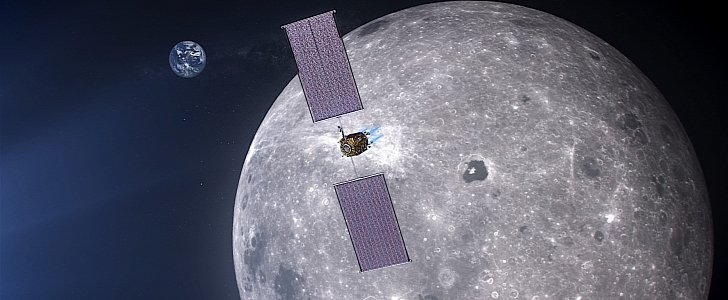Not long from now, most likely during our lifetime, the human race will have its first ever space station circling the Moon and acting as a staging area for missions to the lunar surface and further out into the solar system. Called Gateway, the station went official this week, as NASA awarded the first contract for its build.
As stated last year, when Gateway was previewed, the first element to be built is the power and propulsion module that will keep Gateway running. This hardware, the agency said on Thursday, will be built by Maxar Technologies from Colorado.
Maxar is an older NASA partner, having been responsible for the robotic arms deployed on the space shuttles and the International Space Station (ISS).
For Gateway, Maxar will have to build a 50-kilowatt solar electric propulsion spacecraft, and complete tests for it before 2022, when it is scheduled toil be launched to its designated lunar orbit on a commercial rocket.
Taking part of its power from solar arrays, the spacecraft will require far less propellant, which in turns allows for more mass to be assembled around the Moon, said Mike Barrett, power and propulsion element project manager at NASA.
“Solar electric propulsion is extremely efficient, making it perfect for the Gateway,” he said.
“This system requires much less propellant than traditional chemical systems, which will allow the Gateway to move more mass around the Moon, like a human landing system and large modules for living and working in orbit.”
The Gateway project was born in 2017 when NASA charged five companies with looking into the possibility of designing the components for the station. Following the completion of the power and propulsion element, habitation, logistics and airlock capabilities will be added.
The crew that will work onboard, probably on a permanent basis as on the ISS, will perform deep space exploration and scientific experiments but also send crewed or robotic missions to the Moon’s surface.
The contract for the Maxar solution is valued at $375 million and includes an indefinite-delivery/indefinite-quantity provision.
Maxar is an older NASA partner, having been responsible for the robotic arms deployed on the space shuttles and the International Space Station (ISS).
For Gateway, Maxar will have to build a 50-kilowatt solar electric propulsion spacecraft, and complete tests for it before 2022, when it is scheduled toil be launched to its designated lunar orbit on a commercial rocket.
Taking part of its power from solar arrays, the spacecraft will require far less propellant, which in turns allows for more mass to be assembled around the Moon, said Mike Barrett, power and propulsion element project manager at NASA.
“Solar electric propulsion is extremely efficient, making it perfect for the Gateway,” he said.
“This system requires much less propellant than traditional chemical systems, which will allow the Gateway to move more mass around the Moon, like a human landing system and large modules for living and working in orbit.”
The Gateway project was born in 2017 when NASA charged five companies with looking into the possibility of designing the components for the station. Following the completion of the power and propulsion element, habitation, logistics and airlock capabilities will be added.
The crew that will work onboard, probably on a permanent basis as on the ISS, will perform deep space exploration and scientific experiments but also send crewed or robotic missions to the Moon’s surface.
The contract for the Maxar solution is valued at $375 million and includes an indefinite-delivery/indefinite-quantity provision.


